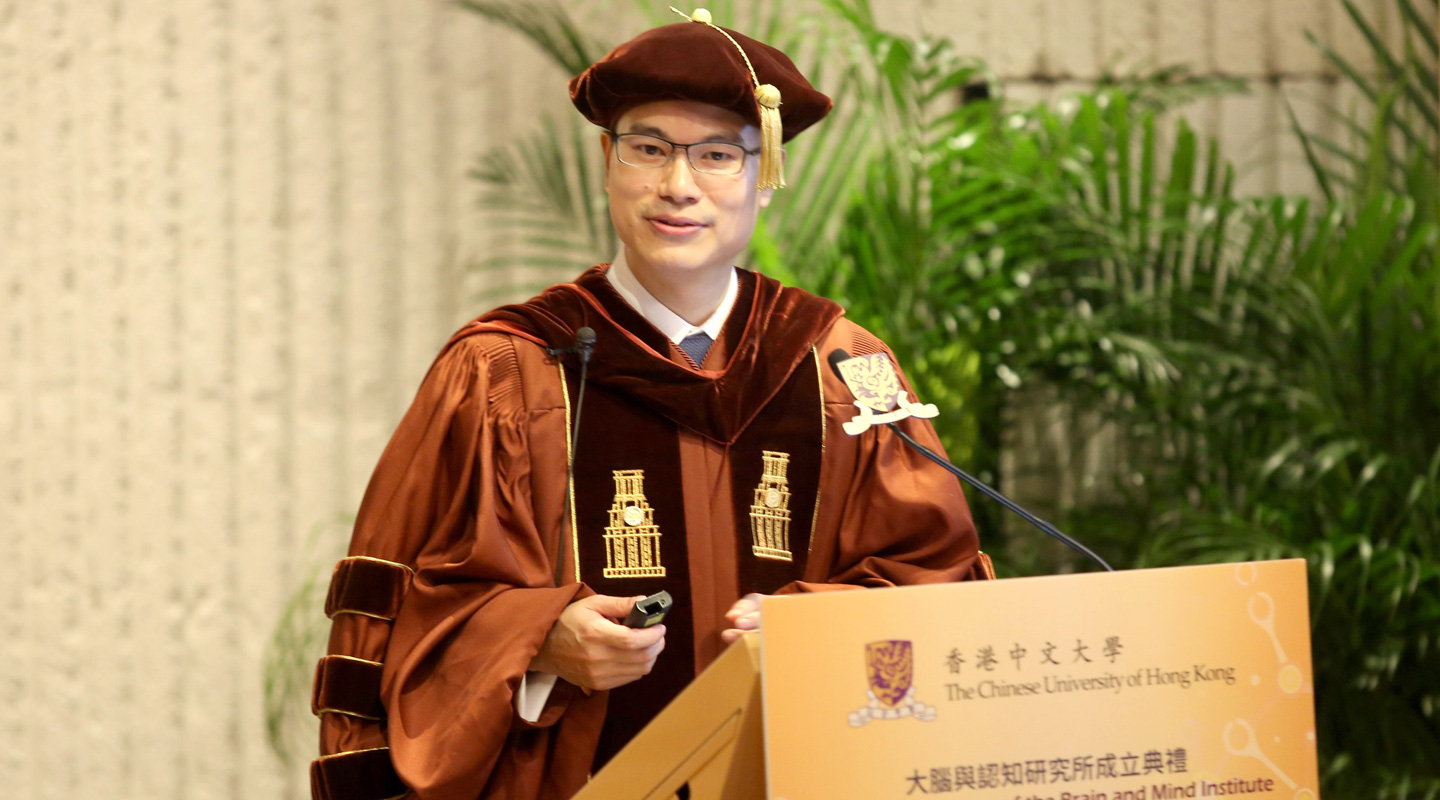Dear readers, With the launch of e-newsletter CUHK in Focus, CUHKUPDates has retired and this site will no longer be updated. To stay abreast of the University’s latest news, please go to https://focus.cuhk.edu.hk. Thank you.
Patrick Wong Hunts Down the Language Genes

Prof. Patrick Wong
- Department of Linguistics and Modern Languages
- Stanley Ho Professor of Cognitive Neuroscience
- Director of Brain and Mind Institute (BMI)
The recipient of the Humanities and Social Sciences Prestigious Fellowship from the Research Grants Council talked to CUHK Newsletter on the genes of language, autism in the Chinese context, and his obsession with accents.
Could you tell us in layman’s terms about your award-winning research project—dopamine-related genes and language learning?
Different brain networks are responsible for the processing and learning of different components of language, e.g., sound pattern, grammar, meaning. Different genes are expressed in these networks or they regulate the neurotransmitters within these brain networks. Thus, these genes, which we hypothesized are related to the neurotransmitter dopamine, are associated with language. What we are doing now is to empirically test this hypothesis by gathering data from language learners and by specifically analysing their genetic data.
What impact does this research have for the real world?
It provides a model for the neurogenetic basis of language disorders which affect about 8% of the population. We may ultimately develop a biologically-based, objective test for language disorders to complement the typical behavioural assessment.
How did you get into linguistics?
Ever since I was a child, I’ve been fascinated by different languages. I liked to analyse languages and understand how they become what they are. Linguistics is the scientific study of language, and it gives me the opportunity to learn more about languages and how language is associated with our biological makeups.
How many languages do you speak?
Just Chinese and English. But all linguistics majors have to learn a number of different languages, so I did learn German, French and Latin.
BMI emphasizes the ‘from molecule to behaviour’ approach to research. Please elaborate.
Language and cognition are phenomena that we can observe and measure behaviourally. These behaviours are linked to our brain, and brain functions are regulated by genes. At the BMI, we are interested in studying language and cognitive disorders across this spectrum—from DNA molecule to behaviour—so that we can understand them most comprehensively.

Why has BMI been focusing on studying autism in the Chinese context?
Many of our behaviours are culture-bound. Eye contact and gaze is one example. Research suggests that East Asians and North Americans, when presented with the same picture, do not look at it the same way. East Asians tend to balance looking at the background and foreground while people of European descent in North America would pay more attention to the foreground, which in a lot of the cases is the face.
One characteristic of autism is impairment in social interaction including poor quality or lower frequency of eye contact. But that is a conclusion drawn from research on European subjects. If eye contact and gaze or other traits differ across cultures, we should consider carefully how these traits should be evaluated when working with individuals from different cultures.
You’re an expert in both language and music disorders. How are the two related?
The vast majority of languages in the world are spoken languages. They are auditory and require us to use the parts of our brain that are responsible for hearing. Music is obviously also auditory. So the two are related first because they use the auditory neural system. The two are also governed by rules or grammar. In a lot of our studies, we try to understand whether someone who has a disorder in one domain—language or music—would also have a disorder in the other.
As a linguist, do you have the habit of analysing your interlocutors?
Oftentimes, I pay attention to the sound pattern of someone’s speech rather than its content. For example, I would like to know from their accents where they are from and the age at which they acquire a second language. Sometimes I even lose track of what they are trying to tell me.
Christine N.
This article was originally published in No. 534, Newsletter in Mar 2019.